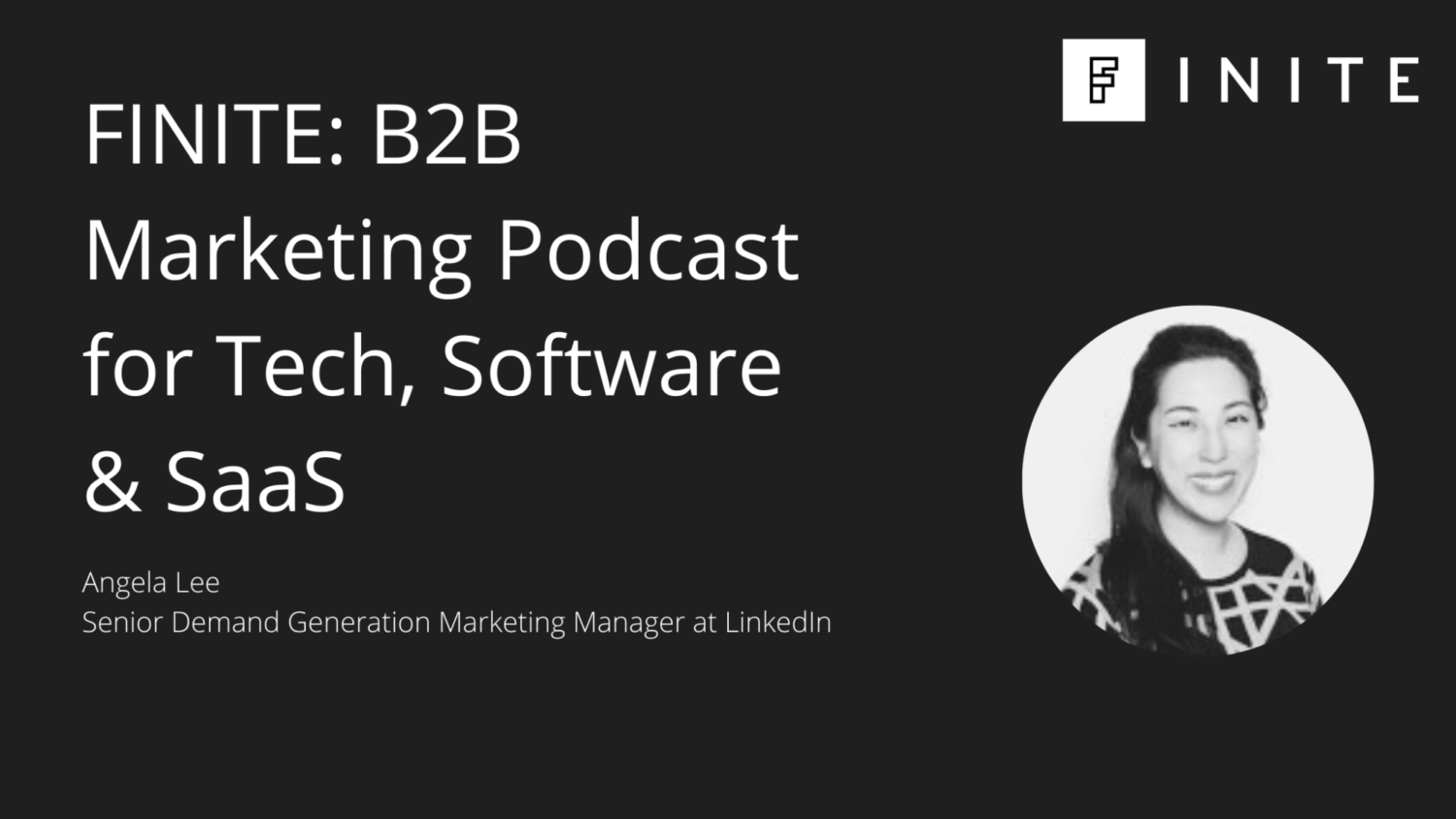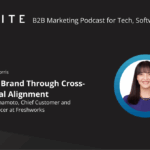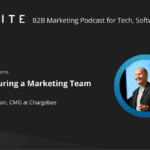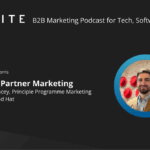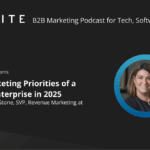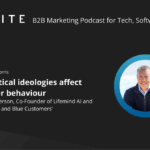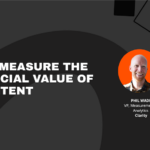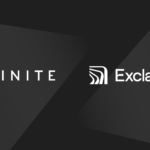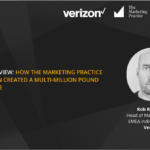On this episode of the FINITE Podcast, Alex sat down to record an episode with Angela Lee. Angela is Senior Demand Generation Marketing Manager within a business unit at LinkedIn, and she talked all things Account Based Marketing. Angela joined LinkedIn to build an ABM approach from the ground up in her current role, and so shares some great tips for anyone looking to get started with Account Based Marketing.
This episode covers:
- About Angela’s background in marketing
- How Angela leads Women AT Linkedin
- The ABM model that Angela uses at LinkedIn
- Where to start when embarking on an ABM strategy
- How to do ABM with a small team and limited resources
- How to incorporate SDRs into an ABM strategy
- How to maintain a strong relationship with SDRs throughout the ABM process
- Challenges of ABM and overcoming them thorough planning
- Challenges of MarTech for ABM and predictions for the future of MarTech
Listen to the full episode here:
And once you’re done listening, find more of our B2B marketing podcasts here!
Full Transcript
Alex (00:07):
Hello everyone, and welcome back to the FINITE podcast. Today I have the pleasure of sitting down to record an episode with Angela Lee.
Angela is Senior Demand Generation Marketing Manager within a business unit at LinkedIn. And today we’re talking all things account-based marketing. Angela joined LinkedIn to build an ABM approach from the ground up in her current role. And so she shares some great tips on how to get started with ABM. I hope you enjoy.
FINITE (00:31):
The FINITE community and podcast are kindly supported by 93x, the digital agency working exclusively with ambitious fast growth B2B technology companies. Visit 93x.agency to find out about how they partner with marketing teams and B2B technology companies to drive digital growth.
Alex (00:52):
Hey Angela, thank you for joining me today.
Angela (00:54):
Hi there Alex. Nice to be here, thanks for having me.
Alex (00:57):
I’m looking forward to talking. We are going to be diving deep into ABM as a subject and hear about your experiences at the moment, building ABM from the ground up to some extent in your role at LinkedIn.
But as we always do with these episodes, I’m going to hand over to you and let you tell us a little bit about your background, how you got into marketing and a bit more about your current role.
About Angela’s background in marketing
Angela (01:17):
Thanks Alex. Yeah, so I actually got into marketing in a little bit of a, I took a lot of detours in order to get into marketing. So right out of undergrad I actually started off in finance. I was kind of looking for that thing that I was really passionate about. I quickly realised that finance was not for me, ended up going back to grad school for two years to buy myself some time to figure out what that passion area really was.
After grad school I started in investor relations since I had a little bit of that financial background, but wanted to move more into a coms capacity. Did that for two years, but was really looking for something a little bit more creative, so I was lucky to be offered my first role in marketing. This was about 2012 or 2013, and haven’t looked back since.
So I’ve been in marketing ever since, I’ve been in different functions within marketing. I started off in marketing communications, dipped my toe into a little bit of content marketing, as well as a little bit of product marketing, to a certain extent. And then the last few years I’ve been focused really heavily on demand generation specifically.
Alex (02:26):
Cool. I can’t remember what episode this is, but we’re in the thirties now, maybe forty of the episodes that we recorded. I think only maybe two have actually formally studied marketing as a subject. So I think it’s quite a common thread that people that ended up in marketing from all kinds of different directions. But out of interest, what did you study in terms of your undergrad and graduate stuff?
Angela (02:48):
I actually did international relations. So going in, I had the idea that I was going to go work for the state department or become a diplomat or work for an NGO. But during grad school I realised I wanted to go back into private sector work. So I went into investor relations and then eventually found my way into marketing.
Honestly, I can’t imagine doing anything else at this point. I honestly don’t know what else I would be able to do or have the skills or capacity to be able to do other than marketing. So yeah, I’m definitely here to stay for the long haul.
Alex (03:22):
And tell us a bit about the role at LinkedIn now and specifically where you focus, where your role sits in the wider team and a bit more about the day to day.
Angela (03:31):
So I joined LinkedIn about a year ago. I sit within the Glint business unit. So Glint enables companies to survey their employees on their happiness level, making sure that the company understands employee sentiment and uses those to inform business decisions. So that is the business unit that I sit within.
I was hired specifically to help with leading digital marketing campaigns and also building out our account-based marketing function within the Glint business unit. So I’ve been hard at work doing that over the last year. And I know we’ll deep dive more into that over the course of the next couple of minutes.
Alex (04:14):
Cool. And I saw on your LinkedIn profile, you also co-lead Women AT LinkedIn. Tell us a little bit about that and what it involves.
How Angela leads Women AT Linkedin
Angela (04:21):
Sure. So I’m the Global Communications Co-Lead for Women@LinkedIn. Women at LinkedIn is an employee resource group comprised of about a thousand women, non-binary and allies. So we welcome everyone to the group, but the group’s purpose is really to make sure that women have a platform in order to engage with each other as well as to lift each other up.
So we have a lot of programming around events, both internal and external. We invite internal and external speakers to speak on those. Our big marquee event is around International Women’s Day in March. So I’m really excited to be part of that employee resource group at LinkedIn and helping to advance women in the workplace at LinkedIn.
Alex (05:08):
Before we dive into ABM as a subject, tell us a little bit about the kind of businesses that you work with within the business unit linked to LinkedIn and the sales journey. Because I think that we’ll maybe set the scene in terms of possibly where ABM is appropriate in terms of sizes of accounts. And I’m assuming you’re kind of more towards the enterprise end of B2B marketing, but it would help just to give everyone a sense of perspective.
The ABM model that Angela uses at LinkedIn
Angela (05:32):
Yep, exactly. So we have a B2B SaaS model for selling. We sell specifically, I would say to more so mid-market and above, are our bread and butter. So really looking to focus on companies that have over a thousand employees and will have a higher likelihood of needing a survey tool like Glint to help survey their employees with. So that’s where we’ve focused a lot our selling efforts on. We also sell both domestically within the U,S as well as internationally as well in EMEA, as well as APAC.
Alex (06:07):
And so ABM is one of those topics that I think is kind of everywhere you look in the B2B marketing world at the moment and ever rising in popularity and interest for a number of reasons we can talk a bit about.
I guess, as a starting point, it sounds like you came into the business with a mandate to deliver ABM from a bit of a standing start. Would that be a fair description?
Angela (06:31):
Yeah, exactly. And I think to your point, Alex, around just this buzzword ABM, I think it’s been in the market, at least for the last, I would say five to 10 years. It’s been really top of mind every conference you go to every sort of event that you attend, or if you talk to other marketers, they’re always asking about, so what type of ABM strategy are you using at your business? I think the impetus to that is really trying to break through the noise.
So historically when it comes to demand gen, which is the function that I’m in, it’s really around inbound marketing. So trying to attract as many people to come to your website, to engage with your ads, to respond to your emails, et cetera. So it was kind of that, using the analogy of the hunter gatherer. It was more of that gatherer sort of model. So we’re just kind of passively putting things out there, but passively waiting for people to come to us.
So I think in the last five to 10 years, there’s definitely been that shift into more of that, what I would call the Hunter mentality. So really being very laser focused on accounts that make sense for the sales folks, as well as marketing to really put more resources around and really go after more.
Alex (07:45):
Yeah. I think one of our first FINITE events we ever did was actually on ABM and we had someone I think from Fujitsu speaking and she was a kind of maybe what I describe as an ABM purist in that for her, ABM was not even to be used for acquiring new accounts or for sales. It was more once you’ve already got a big enterprise account, it was kind of selling within that account and scaling that account. And that was her perspective on this newer breed of ABM, which was how we target new accounts was not really what ABM was.
So I think that’s maybe been an interesting shift because I guess that purist may not be the best description, but the older form of ABM has been around for a long time, even pre-digital and used in different forms. But just to be clear in this context, we’re talking about you actually targeting some kind of net new opportunities through the ABM strategies that you’re running.
Angela (08:36):
Yeah, that’s right. So we focus primarily on net new customer acquisition. Obviously LinkedIn is a big organisation. We have also focused in previous ABM strategies around selling into other business units. So if they are a customer of a different LinkedIn business unit, trying to cross sell into that specific business unit’s customer base as well, since we have a good number of accounts that other business units may have a relationship already, and therefore it will be easier for us to sell Glint into those specific business units.
Alex (09:14):
Makes sense. And so when you arrived within the business, no ABM was really happening. It was most of the other typical marketing type stuff was happening, but none of it within a kind of account focused lens. Is that fair?
Angela (09:31):
Correct, yeah. So I think before I joined, it was very much an inbound focused demand gen strategy. So the different channels that I mentioned before around email campaigning and content syndication, ads, running ads on Google and Bing, there’s those what I would call traditional demand gen tactics were the ones that were being employed.
So after I joined my mandate, and the reason why I was hired in, was to specifically stand up account-based marketing overall and also help to manage all of our digital marketing campaigns as well. So that was the key reason why I was hired. My background previous to this was I had stood up account-based marketing at my previous role, also specifically focused on mid-market and enterprise companies.
So I had a good deal of experience in standing something like ABM from the ground up. So that was the journey to why I was brought in to do that at LinkedIn.
Alex (10:33):
Cool. Makes sense. So you arrive at LinkedIn on day one, blank canvas. Where do you even begin with starting to explore implementing ABM and I guess taking all of the people and other sides of the business with you on that journey?
Where to start when embarking on an ABM strategy
Angela (10:48):
I think for the first couple of weeks was honestly just trying to get onboarded and understanding our business model and understanding who are the key players that I could potentially tap into or lean on to be key stakeholders in the process.
So it was honestly just familiarising myself with what has been done so far. What is the kind of the vision, or overall business objectives for Glint specifically. And how would ABM aligned to that?
So I was always very cognisant of understanding what those higher level business objectives are, because I didn’t want to be doing ABM within a vacuum and targeting accounts that didn’t make sense for us to be targeting from an overall business strategy perspective.
So understanding what those business objectives were, was really key for me to wrap my head around how to build an ABM strategy moving forward.
Alex (11:41):
Makes sense. And so, I guess as you say, the first few weeks of on boarding and getting to grips with the business and the model and how everything works.
Was this kind of building up a new way of doing marketing alongside everything else, or was this kind of fundamentally taking a lot of the other stuff you mentioned in terms of more typical inbound demand gen you know, the things you mentioned around contents syndication, ads, email, the other things, and effectively stopping doing those and channeling resources towards ABM instead? Or is it still the case that you’re kind of doing both side by side, if that makes sense?
Angela (12:17):
Yeah, no, that makes sense. It was definitely a parallel track. So we were continuing to do all the things that we had always done, but this was supposed to be something on top of all those things that we’d done previously and really helped to build more. I know we’re going to talk about success and metrics and things like that, but at the end of the day, especially for demand gen, it comes back down to the pipeline.
That’s the metric that we’re always being asked for, being measured on. And so anything that we can do from a marketing source pipeline perspective, anything that ABM can do to help with achieving those marketing source pipeline goals is more than welcome. So, that’s how we were thinking about it, running in a parallel track. But this was creating a brand new track for us to test and implement.
Alex (13:06):
Cool. And so I guess in terms of other resources and team and colleagues you need to support you with this kind of work. How does that look now? But also when you first joined, was a big part of the initial work figuring out what you needed and not just in terms of people, but also other resources in terms of tools and technology, which we can come onto as well?
Angela (13:26):
Definitely. It was trying to identify our team within the marketing team within Glint, which is actually very small. So we are in a lot of ways, very under-resourced from a content perspective or anything like that. Obviously with ABM, there’s a lot of customisation and personalisation that needs to be done in order to really resonate with our prospects.
So a lot of my time was also spent on understanding, given these are under-resourced areas, how can we supplement that with the areas where we may have some additional resources? So taking a look at the different team compositions, one thing I uncovered was that we actually have a very robust SDR team.
And so I relied the way that I built my ABM model and plan was to really rely more heavily on the SDR team and really spending a lot of time on enabling them to understand what ABM is and how best to go about the outreach process, the personalisation process, and spending time with them on making sure that they understand those aspects.
Alex (14:33):
Cool. Makes sense. A big thing for a lot of people I speak to who are kind of looking to get started with ABM is number of accounts, prioritisation, really just figuring out at what scale ABM can work for them. And I guess a big trend particularly on the technology side of things is that a lot of technology now can help to scale some of that personalisation and make ABM generally more scalable. But what’s your perspective on that?
And I guess any advice for someone that’s maybe in a smallish B2B marketing team, maybe two or three marketers who are all relatively generalist. Do you think it’s possible to execute on ABM type work with that kind of structure? Or do you need more resources ultimately?
How to do ABM with a small team and limited resources
Angela (15:15):
Yeah, I think it’s definitely possible to do it. It’s just a matter of how you configure your ABM plan. So for example, I knew that our content team was under-resourced. So, I really took it upon myself to then try to lean more into the SDR team, which has a more robust set of individuals that could be helping with this process.
So an example being, I would work with the content team on creating, for example, templates that the SDR team could then use. And then I would have the SDR team go and research on each individual, being able to plug in a sentence or two that really speaks to the fact that they’ve researched this individual, understand their background, their priorities, et cetera.
But hopefully that’s a good example of how I could take an under-resourced situation and make sure that I’m also being cognisant of SDR’s time and not having them customise entire emails to send out, but really equipping them with the tools necessary to set them up for success.
So that in itself, it was me as the main person that was leading that effort, one content person that wrote out the templates and then a team of SDs that would help to execute on that. So I think in that sense, it is possible. I know you had a question about volume and actually before I get to that question, one tip that I’d have for someone that’s just starting out with the process that I found really useful is doing a closed one deal analysis.
So this goes back into segmentation of what accounts you should be selecting. So, what I’ve done in the past is I’ve looked at closed deals for the last two years and really taken a look at where we have traditionally won. What types of accounts have we won? What types of verticals have we won? What regions have we won? And what are the characteristics of these accounts, where we have won? And try to make some decisions based on that.
So for example, we uncovered that healthcare was an area that we’ve traditionally won in. And so taking a look at the health care market, you can then decide, do you want to target all of health care or do you want to target a sub group of healthcare and just target hospitals, for instance.
So I think when it comes to volume, I think you first need to get a lay of the land of where you’ve traditionally won. And then also going back to resourcing, healthcare is a huge industry. If there’s only one or two people and a few SDs, does it make sense to have them reach out to a hundred accounts each, then of course that ties into sales and marketing alignment, which is this very nebulous word, but when I say sales and marketing alignment, I mean having a conversation with the SD team leads on what are their priorities, how much resourcing can they give per day per SD to devote to this effort in this situation?
So if they say I can only give them an hour, then you would be able to kind of comb down your list and say, well within an hour, they could probably reach out to an X number of accounts during that time. So there’s a lot of kind of triangulation of different factors to make up what makes sense from a target account list perspective and volume aspect.
Alex (18:34):
The industry vertical specific segmentations is an interesting one, because I guess a lot of B2B technology companies have a solution that can apply across a number of different industries. Is that something that I assume you have a product which ultimately can cater to pretty much any business that wants to do this type of measurement or sentiment around employees.
But I guess you’ve gone down the path of identifying specific pain points unique to those industries, and then your SDRs are actually using those in their messaging and their outreach and in that kind of thing. So in terms of building the ABM plan, talk a little bit about how the SDR role fits into that.
Maybe we can touch on sales and marketing alignment a little bit more, cause as you mentioned, it always comes up, it’s hard to avoid it in an ABM based discussion. But in terms of your initial plans, tell us a little bit about the SDR role.
How to incorporate SDRs into an ABM strategy
Angela (19:27):
So the way that we structure our ABM plan is we have what we call sprints for each round of ABM. So for example, in each of the sprints the duration of time is between 30 to 45 days of very intense outreach and marketing efforts to the specific set of target accounts.
So using healthcare as an example, we started day one with a lot of the air coverage campaigns that are produced by marketing. So a lot of the targeted search ads were launched on this day, LinkedIn ads, personalised LinkedIn ads were also launched on this day. And we did a lot of content syndication to these specific accounts also launched in those first week or two. And so we started with the air coverage aspect of things.
So making sure that these accounts were familiar with who we were, they started seeing our ads everywhere. And so almost like a softer approach in the first week or so first week, week and a half or so. And then week two was when we start really leaning heavy into our SD team.
So our SD team will usually start with some sort of outreach around informing them, giving them an asset of some sort that relates to key pain points that they’re experiencing. Obviously the first email is the most important one. So we asked them to spend a lot of time on personalising that specific email. So, we provide them with a template. They go in and do research on the individual and have customised sections for the emails filled out.
And then from there, they launch into a sequence of between, I would say, two to three outreaches per week, providing these, we see ourselves as not trying to push product, but really trying to inform them of specific assets or content that we feel would be valuable for them to enjoy.
And then sprinkled in between all the SD outreach is more marketing type of air coverage events. So webinars, specific webinars, specific ABM type round tables are sprinkled in between this 30 to 45 day duration of time. But that gives you an idea of what our overall ABM plan looks like.
Alex (21:45):
Yeah. And so in terms of number, how many SDRs did you say you’re working with at the moment?
Angela (21:51):
I would say 10, 10 to 12, I believe right now.
Alex (21:56):
Cool. And in terms of, within one of those 30 to 45 day type sprints, how many accounts would each SDR typically be kind of working with?
Angela (22:05):
For the healthcare round that we were doing was actually a little bit of a smaller account list we had between 2 and 250 accounts. So they each had, I would say between about 20 accounts or so, so it’s definitely a manageable amount of accounts, I would say, average to contact. So it’s 40 individuals.
We also made sure to give them a lot of time at the beginning of the process, in order to set up their outreach, have time to research all these individuals, et cetera. So I think the pre-work portion of it was very important.
Alex (22:37):
Yeah. Sounds like you do a really good thorough job of kind of briefing and training and educating and stuff, which is really key. Within that, once they’re underway are they coming back to yourself a lot and saying I need resources or have you got a case study or we need a white paper on this, or can you help answer this question? Or do you typically find that if you really own the first bit of training and setting things up, that actually not much of that comes up?
Angela (23:03):
Yeah. Actually one thing that we’ve started to do, and this is definitely a learning as we’ve gone through the process is when it comes to the content development piece of it, the first round, it was really myself and the content manager putting together the content for everything.
We realised over time that we actually really need to lean into our sales folks and our SD teams more to understand what they’re hearing on the front lines. So during this past sprint, we put together a content development team. So the content development team was comprised of myself or a content manager. The SD team leads an AE as well as someone from our professional services team, that’s worked really heavily with healthcare specifically.
And so with this team, we had a much more robust and comprehensive understanding of the healthcare industry. We knew what healthcare prospects were saying to our SDs day in and day out. We knew what their key pain points were because those were being reflected back in those conversations.
And so I think during that content build process it made it much more streamlined and during those content builds, the SD team leads were very involved in providing feedback since they understood what resonates with our prospects and what doesn’t.
So we actually used that as a way to get ahead of some of the questions that you were asking about, is that hopefully by the point it gets the SDs it’s already been vetted by their leads. And so hopefully everything that should have been included will have been included in the process.
Alex (24:39):
We talked a little bit about the alignment side of things broadly, but what does that look like from a more practical perspective? Once one of these ABM campaigns is underway, how frequently is it? What kind of frequency of updates and feedback are you getting from the SDRs? Are you having weekly catch ups, daily stand-ups? There’s so many ways of approaching this side of things, but we’d be interested to hear how you tackle that.
How to maintain a strong relationship with SDRs throughout the ABM process
Angela (25:05):
Yeah. In my previous role, when we were first piloting this, we actually did have close to daily stand-ups. We were working with a much smaller account list back then though. So each SD we would go through every single account and then basically have the SDs give a summary of what’s happened with this account over the last day. Have we gone into contact with someone?
We also use that as a way for the SDs to provide feedback on if the outreach efforts were working or not, and also give feedback. So for example, on the marketing events, they would hear from our prospects on if those marketing events were resonating or not, but we really used our SD team as having their ears to the ground and really understanding, providing that real time feedback so that we could optimise everything as best as we could.
So when I think about sales and marketing alignment, again, it sounds like this very nebulous word, but a lot of it’s just establishing cadence for meeting and then having very clear objectives for what each meeting should be discussing. And I think another point is alignment ahead of time on SDs bandwidth.
So making sure that before we launch anything around ABM is to talk to their, for example, their team leads about from a resourcing perspective, how much time can an SD devote to this effort? How should we be holding them accountable? How should we be tracking that they actually made the phone call or sent the email out? Where could we see that data? So really getting down more into the nitty-gritty of holding each other accountable as well.
Alex (26:41):
Yeah, absolutely. We’ll come on to talking about the tools and data and that side of things shortly. Cause I know that’s an interesting side of ABM. I was going to ask you in terms of going on this journey of implementing ABM, what are some of the biggest challenges you’ve had that you’ve run into along the way?
Challenges of ABM and overcoming them through thorough planning
Angela (26:57):
Yeah, I mean, there’s been a lot of challenges, a lot to name. I think a lot of the challenges have to do with resourcing. So that’s been a big challenge, so there’s just not enough people to create customised, personalised content. There’s not enough folks to reach out to a thousand accounts. For example, another challenge is just on tracking. So how do we track success and then also just goal setting as well.
So what is a realistic goal for ABM if we’ve never done ABM at a company before, what is something that’s realistic? And then also just overall, I would say just managing of stakeholders and expectations. A lot of the times sales expects that we’re just going to start generating pipeline day one and you know, it’s not that easy.
And so expectation setting, I think, has been a challenge as well, but I’ve found that over the last couple of years, as I’ve been doing account-based marketing, one tip I can offer to the audience is you may get pressured to have to start right away. It’s like, we need to start ABM right now. Like this month, we need to get an ABM program going, and I’ve definitely been in those situations.
But what I’ve found is that I wished I had pushed back a little bit more and said, actually I need another couple of weeks to really nail down the plan because it just makes your life a lot easier and more streamlined if you get all of the questions answered ahead of time, everything aligned ahead of time, all the content created ahead of time.
It’s just less stressful overall to just have that pre-work done before you have to just start launching. Like building the machine as the machine is running basically, which is a situation I’ve found myself in a few times. So yeah, that’s definitely one piece of advice I would give to the folks listening to this podcast.
Alex (28:50):
Good advice, I think good advice across most marketing activities I think in some respects. Let’s talk about the success measurement side of things as well, because I think that, I guess largely ties into stakeholder management. I think as soon as you can prove the value of what you’re doing using numbers, then the business case kind of builds itself.
I guess when you come into a new role and ABM hasn’t been happening and there’s not really anything to benchmark against, can you take past experiences from previous companies with you, or is it really a case of saying to people, this is new territory for different types of products in different verticals, we just need to get going and as we’ve made some progress, we’ll be able to kind of get that benchmark in place and then optimise it.
Angela (29:36):
I think it’s more the latter, honestly, because I don’t know if a lot of it translates very well from company to company. I’ve tried in the past to use non-ABM metrics. So overall conversion rates or accounts within a specific vertical. So on average, how long does it take to go from MQL to an opportunity? Can I use that as some sort of baseline for account progression when it comes to ABM?
It’s not exact, it’s not an exact science or calculation. A lot of it is just conversations with the marketing team and the sales team. And a lot of it’s just them putting trust in you and saying we understand this is going to be the first round, we’re just going to test this out. We support this effort and we’ll see what happens.
And then from there we’ll just continue to optimise and at least we’ll have that one benchmark in place for what things look like. And so in that way, I think a lot of it’s figuring it out as you go when it comes to that first round. And yeah, I would say if I’m going to be totally candid, I don’t know if there’s any hard, fast numbers in this first round, it’s really just seeing what happens and then using that as a basis for learning.
Alex (30:53):
I mean, I wish it was easy to benchmark across different companies and sectors and stuff, but it’s unfortunately pretty tricky to do so that makes sense. And what about measurement now in terms of, you mentioned at the start about ABM driving pipeline and depending on who you talk to, certain people will suggest that obviously marketing is much more than just generating leads and we have to kind of connect everything we do in marketing back to revenue.
What does that look like in practice now and how do you approach the measurement side of things? I assume the way in which you report upwards is slightly different to the way in which you report to either side and different parts of the business, looking for different numbers, but maybe give us a broad overview of what’s important.
Angela (31:38):
I think at the end of the day, the reason why we do ABM is to build pipeline for our company. That’s the measure we’re always going to be held against. We have interim success metrics, like the number of accounts engaged or how many meetings we’ve set, things like that.
But at the end of the day, it’s really about how much pipeline did ABM generate. And so the benchmark that we’ve used is, and I believe this is an industry benchmark, is that we try to generate around 10% of our overall marketing source pipeline from ABM specifically.
So that’s the higher arching goal that we try to strive towards with each round. Obviously with the sales cycle lengths, it may take six to nine months before you start seeing that pipeline come in, but that’s that North star metric that we’ve used in the past, and we currently use to see if we can get to that number specifically.
Alex (32:34):
Cool. Let’s wrap up by talking a bit about the technology and the tools and the data of things, because it’s a massive part of ABM. And I guess technology has been a big enabler of making ABM possible, maybe for some smaller businesses, but also intent data and all these different data sources that can now be used.
And obviously a bit of movement in the marketplace of different platforms, kind of consolidating with one another, but maybe tell us a bit about how you see the technology landscape through an ABM lens and maybe a bit about some of the tools that you use day-to-day now.
How MarTech can assist an ABM strategy – challenges and predictions
Angela (33:07):
Yeah, definitely. So what I have been noticing in the ABM technology space is there’s just been a lot of consolidation happening over the last, I would say like maybe the last year or two or two to three years. I see a lot of the bigger players starting to merge into one.
I know recently Demandbase acquired Engagio for instance. So I just see there being a lot of consolidation happening, which means for the marketer, there’s less selection in terms of the different types of platforms that you can go in between.
And the other thing that I’ve started to see more of as well is before there would be a lot of tools, and this goes back into the consolidation point I just made, but there’d be a lot of tools specifically for, one for account targeting, one for account ads, one for website customisation, and then they would be three tools. But what I’ve been seeing recently is there’s starting to be more of a platform build.
And I think that is why a lot of the companies are starting to acquire each other or starting to merge into one, is that as a marketer for me, I just want a one stop shop. I don’t want to have to go in between three different platforms and try to pull data and slice and dice and be on boarded onto three platforms and deal with three separate companies. I just want to be able to do it all in one place.
And so I think, and what I predict in the future is that all the ABM tools will eventually all merge into just platforms. So there’ll be maybe a handful of big players in the market and they’ll offer more end to end ABM technology capabilities that encompass the ads, the targeting, the scoring, the personalisation, all in one.
I’ve used a couple of vendors before, and I’m in the process of currently trying to figure out which one to go after and to bring onboard next. But yeah, I think there’s definitely a lot of tools out there that make the life of a marketer easier.
I think the challenge when it comes to ABM platforms and talking to vendors, I think this is something that’s still a nebulous area is how do I show value for a platform when my manager is going to ask me, why should we renew? Or why should we buy this platform?
Like, can you show me in dollars? How many additional dollars will buying this platform give us from a pipeline perspective? I think one challenge is, I haven’t found yet a vendor that can very concretely give me an answer to that question.
Alex (35:47):
I’m just going to say, how often do the vendors actually help you build that case? It’s not common enough.
Angela (35:51):
They cannot give me an answer. Usually I’ve asked it to multiple vendors and there is no answer for that question. So in that case, it’s hard to make a business case for why do we have to spend a very large sum of money to bring on this vendor if we can’t show direct quantitative correlation between our pipeline and bringing on this vendor? Going back to your challenge question, that’s been a challenge for sure.
Alex (36:20):
I think, as I’m sure you’ve seen the map of the MarTech landscape grows in size every single year, it’s across all of marketing a challenge.
But I guess you’re saying that in summary, consolidation is actually a good thing in terms of being able to give you platforms that cater to all of your needs under one roof, one contract, one vendor, one support, one on boarding, all of those things just make life easier. Assuming they’re still as effective as tools. It just makes things easier for you rather than having to choose between loads of different options.
Angela (36:50):
Yeah. I think for me it makes it a lot easier and I guess it would depend on the individual too. Maybe someone is just looking for account targeting, but now they have to purchase a whole platform in order to get targeting.
So yeah, I think there’s pros and cons to the consolidation story, but I guess for me, in having to deal with multiple vendors, I think it’d be easier to just have to deal with one, instead of multiple ones.
Alex (37:11):
Makes sense. Cool. Well there’s so much there, and I think some really practical tips for people wherever they are on the ABM journey overall. So definitely some food for thought for all of our listeners and I’m really grateful that you gave up your time to talk everybody through it. Cause it sounds like you’ve been through some interesting times in terms of setting it up and not just this role, but before as well. Big thank you for joining and for sharing your insights.
Angela (37:38):
Thank you Alex for having me.
FINITE (37:41):
Thanks for listening. We are super busy at FINITE building the best community possible for marketers working in the B2B technology sector to connect, share, and learn. Along with our podcast we host a series of events, so make sure you head to finite.community to subscribe and keep up to date with upcoming events.
